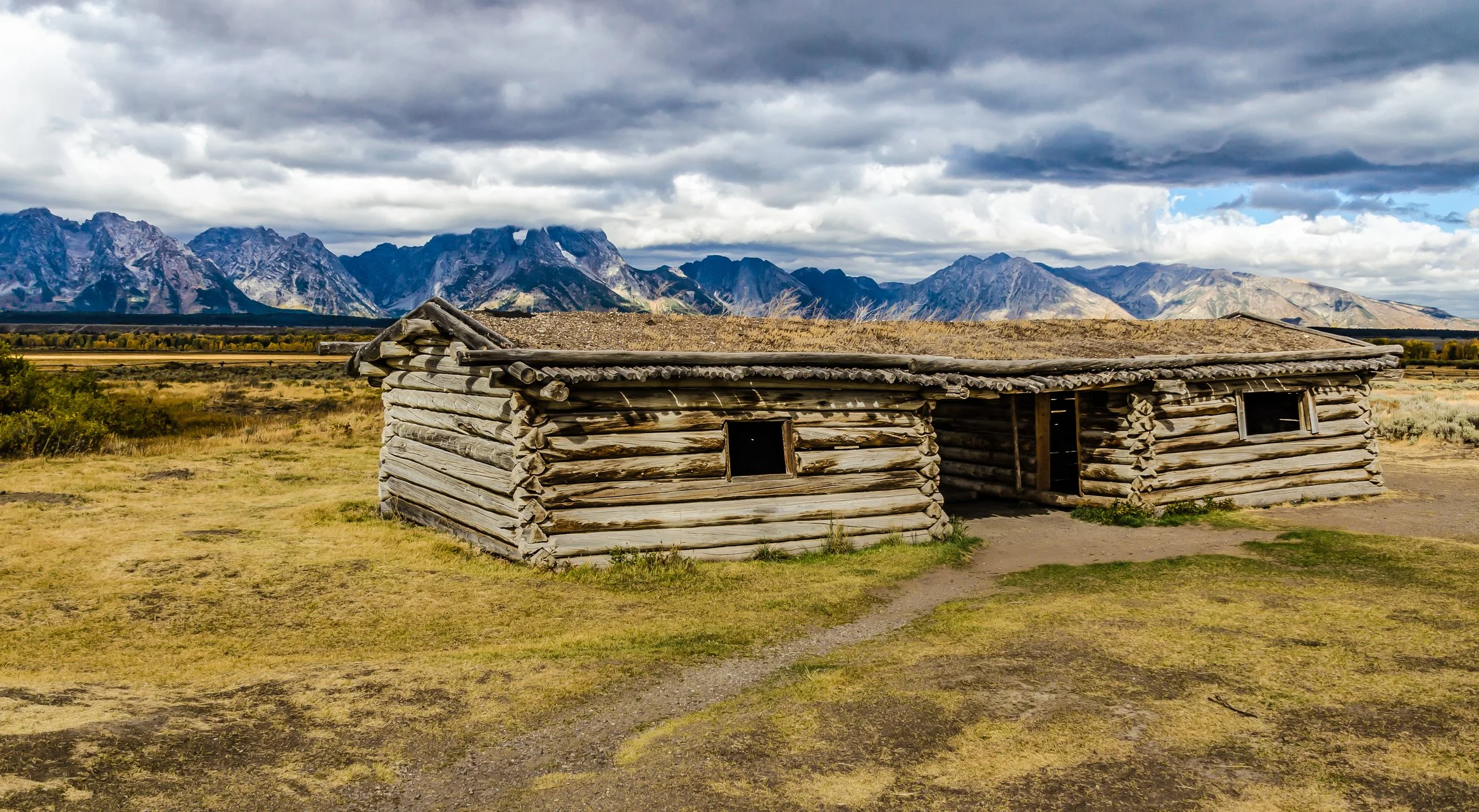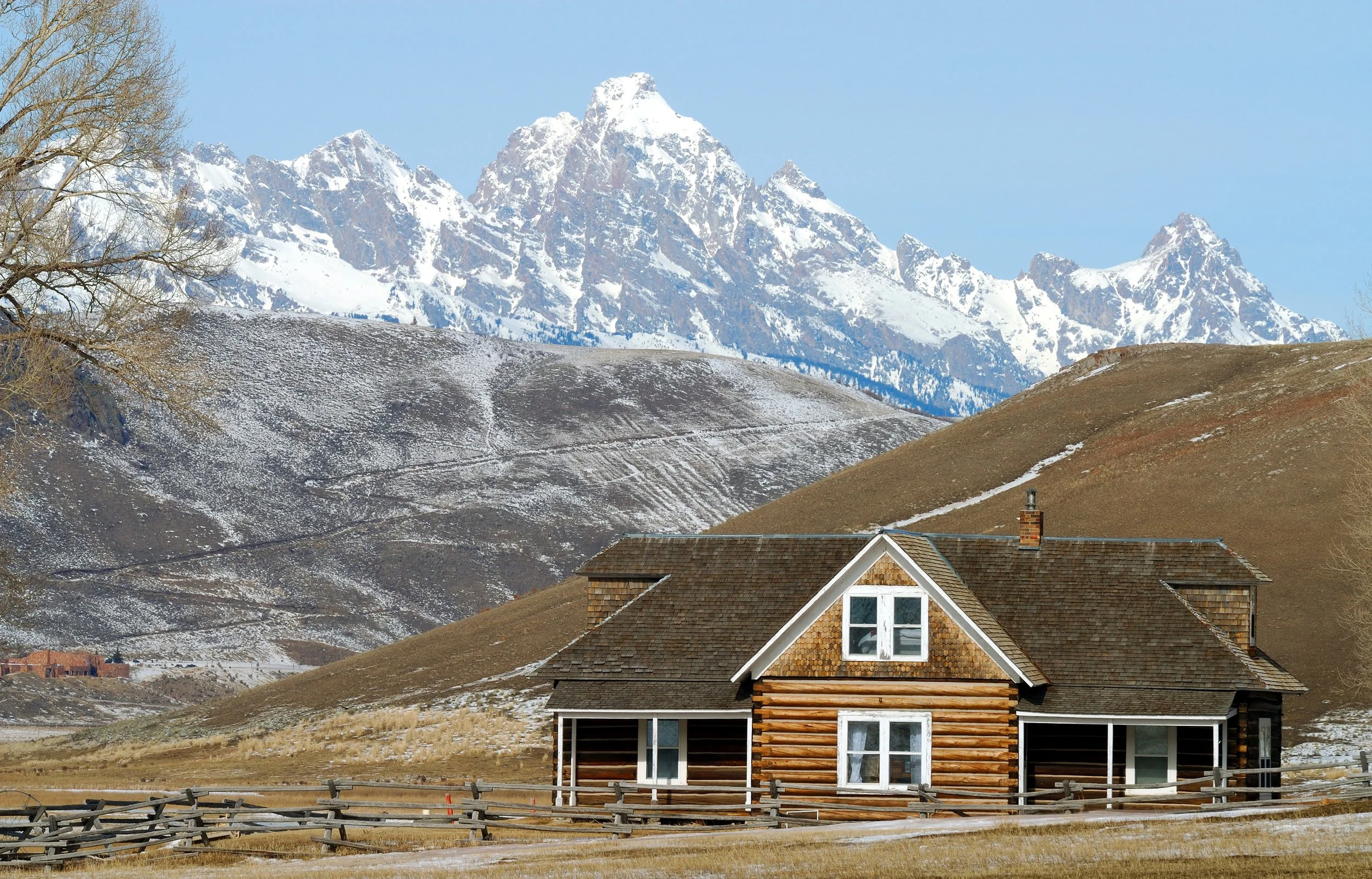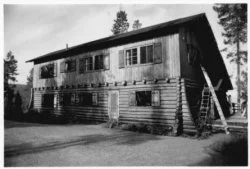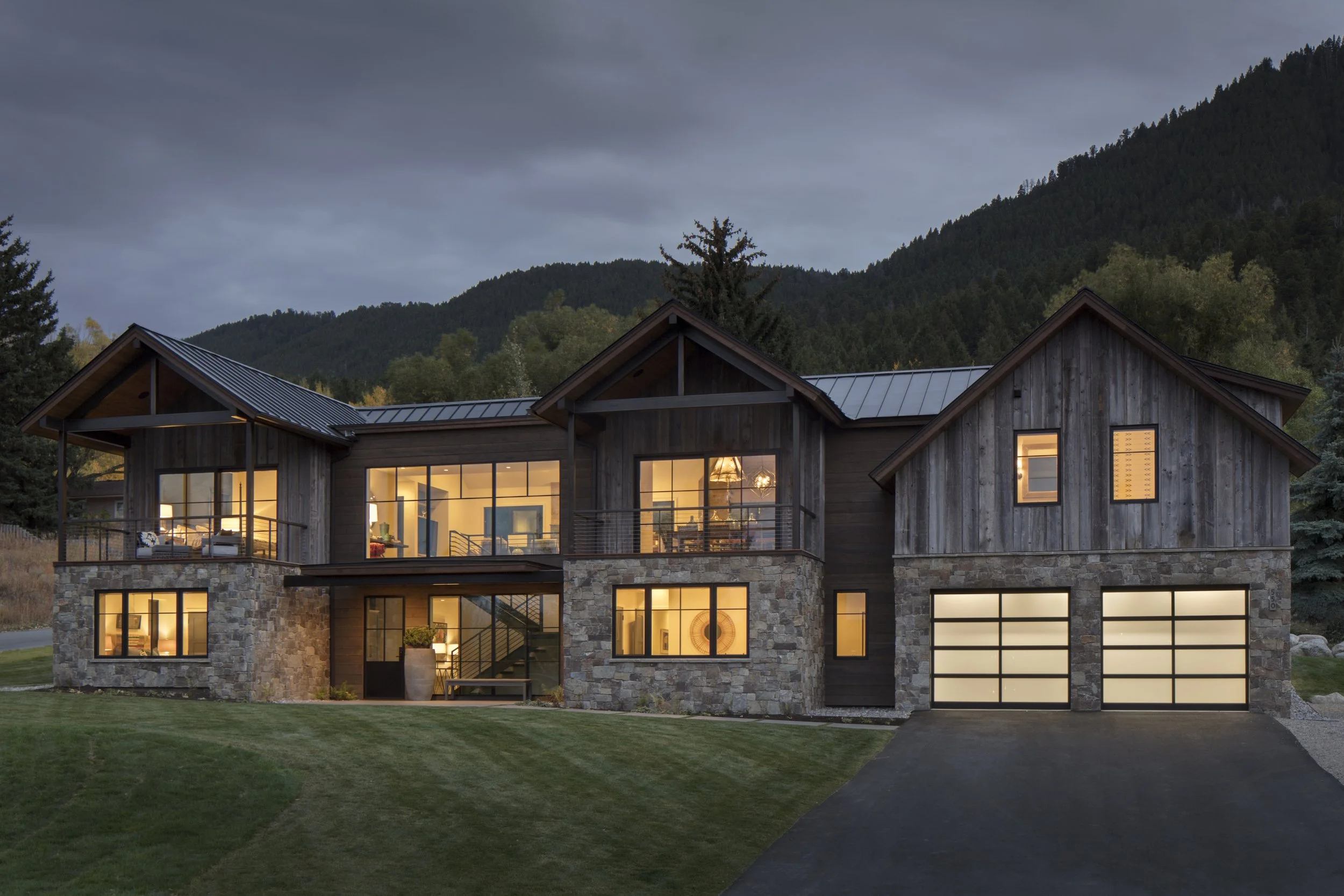From Homestead to Modern
The architecture of Jackson Hole is more than just buildings; it’s a narrative woven from the area’s rugged history, stunning natural environment, and the transformation from a remote homestead to a luxury destination. This evolution has given rise to a distinctive, evolving aesthetic- a style that balances frontier rusticity with modern sophistication.
Early Days: Homesteads and Ranch Homes
Historic Cunningham Cabin in Grand Teton National Park- Built in 1888
The earliest architectural expressions in Jackson were born of necessity and the limited resources of the frontier. The original homestead cabins were simple, small, and built predominantly from local materials like logs and rough-cut timber. These structures, characterized by low profiles, gabled roofs, and a practical, unadorned simplicity, prioritized one thing: shelter from the harsh elements.
The Miller Cabin on the National Elk Refuge- built between 1895-1898
As ranching solidified its place in the valley’s culture, the style broadened into the ranch aesthetic. These larger structures maintained the use of natural materials but introduced a longer, sprawling layout to accommodate families and ranch hands. Key features included heavy timber beams, deep overhangs to shield from sun and snow, natural stone for foundations and fireplaces.
This initial phase establishes the core principles of the ‘Jackson Hole’ look: authenticity, materiality, and a deep connection to the landscape.
The Transition: The Rustic-Contemporary Blend
The Brinkerhoff Lodge in Grand Teton National Park, built in 1946, Courtesy of the Wyoming State Historic Preservation Office
The 20th century saw a massive influx of visitors and residents, drawn to homes and structures similar to those found on the East Coast or abroad. This ushered in a rustic-contemporary era, which redefined the scale and finish of Jackson’s architecture.
This style retained the spirit of the ranch house — broad, horizontal massing and a restrained material palette — but also introduced modern refinements, such as expansive glazing, clean lines and forms, and material contrast.
Architects began to interpret the log cabin not as a structure to be imitated, but as a concept to be abstracted and reimagined. The result is homes that are warm and textural yet sleek and modern.
Where We Are Now: Mountain Modern
Today, the leading edge of the Jackson Hole aesthetic is often referred to as Mountain Modern. It’s a complete embrace of minimalism while still paying homage to the setting.
In this Mountain Modern design, the materials of the landscape become part of the architecture. While you might still see wood, it is often treated or stained to provide a more homogeneous facade. Corten steel, board-formed concrete, and vast expanses of glass dominate, creating a striking contrast against the organic backdrop of the Tetons. Defining characteristics of modern architecture in Jackson include minimal ornamentation and the use of sustainable and durable materials.
A43 Design- Cache Creek & Redmond
The ‘Jackson Hole’ aesthetic is no longer merely about safety; it’s about view-framing, material honesty, and creating a structure that is a calming counterpoint to the rugged terrain. The evolution from humble homestead to Mountain Modern demonstrates a collective commitment to honor the local history while crafting architecture worthy of one of the most spectacular natural environments.




